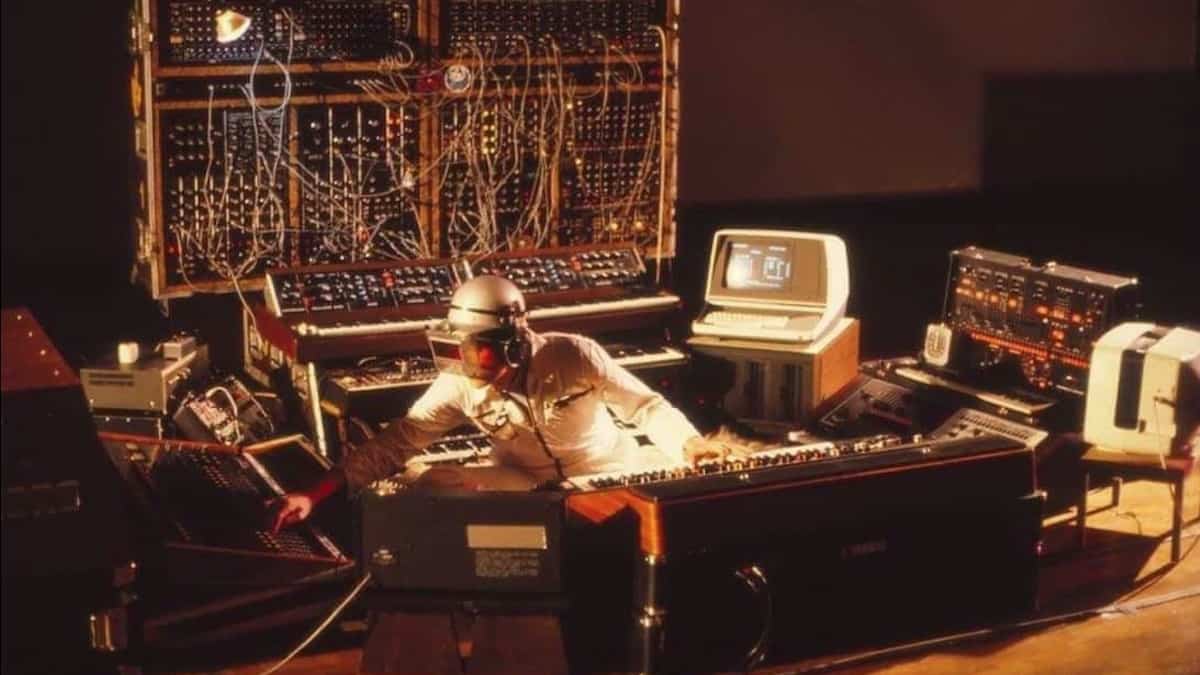Artist News
Klaus Schulze, August 4, 1947 – April 26, 2022

He was a synth pioneer, “Krautrock” musician (former member of Tangerine Dream), and he released 60 albums…
Header image: Klaus Schulze performing the Linz Steel Symphony, complete with steelworker’s helmet. Photo by Tommy Betzler
Synthesizer pioneer Klaus Schulze has passed away at his home near Hamburg aged 74.
Schulze had a more than 50 year career as a musical innovator. As a youth he played guitar in beat groups before moving to drums.
At over six feet tall, he had the power to create forceful bass drum patterns. While playing in a drums and keyboard duo Psy Free in Berlin he was spotted by Edgar Froese of Tangerine Dream. Schulze featured on the band’s debut album “Electronic Meditation” in 1970, but had left before it was released to form his own band Ash Ra Tempel with guitarist Manuel Gottsching.

Schulze always stated that Edgar Froese had opposed his introduction of tapes and sound effects. While playing sessions with a scratch band The Cosmic Jokers, he began to concentrate on electric organ. His debut solo albums “Irrllicht” and “Cyborg” also layered orchestra sounds, recorded on a cassette machine as a local orchestra rehearsed, and passed through various filters and effects.
As synthesizers became more readily available, Schulze seized on each one as it appeared. His album “Picture Music” used an ARP Odyssey to create rhythmic patterns, and he became a great user of Italian instruments, widely available in Germany, from companies such as Farfisa and Crumar. His albums really took off when he was able to buy a Moog Modular system, his epic sequencer album “Time Wind” earning international awards.
Touring around Western and Eastern Europe and Scandinavia (though he never performed in the USA) Schulze continued to innovate, taking with him guest performers such as singer Arthur Brown, cellist Wolfgang Tiepold, percussionist Tommy Betzler, and second keyboardist Rainer Bloss.
The technology progressed – taking in the Fairlight CMI sampler and the rarely seen Crumar GDS – though Schulze later embraced readily available samplers, digital synthesizers and effects.
Illness decreased his studio and live activity in later years, but his concerts with Lisa Gerrard of Dead Can Dance on improvised vocals were a great success, adding to the very small numbers of Klaus Schulze concert DVDs available. He had also performed in Japan, where he had an enthusiastic following.
Though offering around 60 solo albums by the end of his career, earlier Schulze had started to compile unreleased studio, live, and soundtrack recordings into huge boxed CD sets – the Silver, Jubilee, and Ultimate Editions. These sold out quickly, and in more recent years were revised and re-issued by the MIG label in a series called La Vie Electronique, making almost all of Schulze’s output readily available.
Last month Schulze announced a new album “Deus Arrakis,” returning to the theme of the sci-fi epic that he had covered extensively in the past. Hans Zimmer, who had incorporated a Schulze passage into his score for the Oscar-winning remake, is among many other musicians and fans who paid tribute this week to Klaus Schulze’s extraordinary career.
Mark Jenkins
London April 2022
















